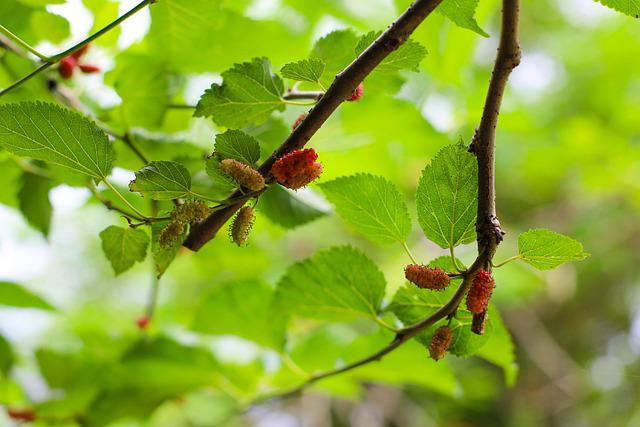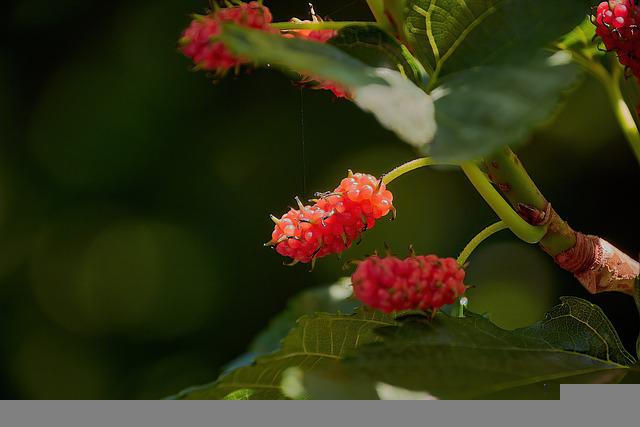How To Grow Mulberry Tree From Cutting

Mulberry trees are generally fairly simple to propagate from cuttings, which is true for most species, but a few rules must be followed to give yourself the best possible chance of success.
First and foremost, do not attempt to root a mulberry cutting taken from a fruiting tree. Instead, the cutting will continue to try to produce fruit and will devote its energy to this endeavor rather than to the development of roots. If you want better results, try propagating the tree right after it has finished fruiting.
Second, choose a mulberry species that is suitable for your needs. Unfortunately, not all of them are easy to spread.
The propagation of more ornamental varieties, such as the Pakistan long mulberry, with its extremely long pendulous fruit, is difficult from cuttings.
Even the native Red mulberries can be a little challenging to work with. Generally speaking, white mulberries are the most straightforward to grow. It appears so simple that many people claim that they cut a branch and stick it straight into the ground and that it usually roots. And white mulberries are edible too! Keep on reading! This guide will teach you how to grow a mulberry tree from cutting, so you can start enjoying the benefits of this beautiful tree soon.
Table of Contents
Step-by-Step Growing Mulberry by Cutting
That is all well and good, but there are some things you can do to increase your chances of success.
- Make a few pots filled with potting soil or seed starting mix and fill them halfway with water to keep them moist.
- Cut a branch between 34 and 12 inches in diameter and six to eight feet in length from the tree. This should be recent but not from a green growth perspective.
- Cut the branch into one-foot lengths, making sure that each length has a few leaves on it before using it to propagate.
- Drizzle the bottom end of each piece with rooting hormone powder – you can do several pieces at once if you want. Make certain that you complete this to the proper conclusion.
- Using a tool, create a four-inch-deep hole in the middle of each pot and insert a stick into each hole.
- Lightly tap the soil around the stick to compact it.
- Using a spray bottle, re-saturate the area around the base of the stick with water.
- Cover the top of the container with a clear plastic 1-gallon bag to create a mini-greenhouse. Use a rubber band to secure the bag around the pot to prevent it from flying away.
- Place the pot in a bright, well-ventilated area protected from direct sunlight. If the leaves wither and die, the cutting is considered dead.
- To maintain moisture in the soil, spray it liberally with water a few times a week or as often as necessary.
- If the leaves are still green after a month, your cutting has taken root, and you can remove the bag from around it. Place them in a position where they will receive half-sun. Continue to water them regularly.
- If you’re lucky enough to have your cuttings survive, you can give some to family and neighbors.
When Is The Best Time To Plant A Mulberry Tree?
While fall is ideal for planting mulberry trees, you can also plant them in early spring after the first hard frosts have passed if you keep them well-watered throughout the growing season.
The trees will have a better chance of developing roots by planting in the fall. Soon after, they go into dormancy, making it unnecessary to water them, and they get a head start the following spring when the weather warms up.
What Is The Best Place To Plant A Mulberry Tree?
However, although mulberry trees can be grown from seed or cuttings, in the commercial world, they are more often than not grafted onto the rootstock, much like other fruit trees and rose bushes.
You want to choose a sunny location and protected from the wind. Mulberry trees often have shallow root systems, making them susceptible to being blown over by strong winds.
They require warm, fertile, well-drained soil, and they should not be planted near paths, driveways, or sidewalks due to the possibility of fruit staining the concrete or asphalt. Keep your distance from any underground pipes or cables and the foundations of any structures.
A standard mature mulberry tree can grow quite tall; depending on the variety, it will require between 15 and 30 feet of space to be effective.
- White Mulberry- It can grow in zones 3b to 9.
- Red Mulberry- can be found in zones 5 to 9.
- Black Mulberry- Zones 6 to 10 are home to the (dry zone 6, not wet zone 6)
What Is the Growth Rate of Mulberry Trees?
Mulberry trees are extremely fast-growing, and some cultivars can reach a height of 10 to 12 feet in six years, depending on the variety.
Starting with seed will take at least 4 years before you see a single fruit on your tree. However, it may take much longer than this, and ten years is not uncommon.
Planting a propagated branch or a grafted tree is preferable to achieve faster growth and fruit production.
What Is the Maximum Height of a Mulberry Tree?
The variety of mulberry trees you choose will determine the height of your mulberry tree.
The height of some black mulberry varieties can reach up to 70 feet or more, but the height of white mulberries will only reach about 30 feet. The red mulberry, native to our area, can grow almost as tall as the black variety.
It is possible to grow dwarf and weeping mulberry trees and those that are kept in check by heavy pruning, such as pollarded mulberry trees. Because of this, they can be kept at much lower heights, making berry harvesting easier.
Even though mulberry trees grow rapidly when young, their growth slows as they age.
Here is an excellent guide to assist you in selecting the most appropriate mulberry tree for your particular situation and requirements.
Mulberry Growing Requirements

Sunlight
It thrives in 3-4 hours of direct sunlight. A lot of direct suns will produce the best berries.
Watering
It thrives in moist soil. Mulberry plants need watering whenever the soil feels dry. You can stop watering the tree once it is established. It will be fine.
Climate
It will not mind spending the day in the sun upon reaching maturity if the Indian tropical climate is suitable.
Soil
Fertile, well-draining soil with a pH of 6-7 works best for this plant. But it thrives in garden soil and can be grown directly in the ground.
Mulberry Tree Care
Fertilizer
Feed the plant every 5-8 weeks with a balanced fertilizer during the growing phase. You don’t need to feed it after it establishes itself.
Pruning
Shortly after the fruiting season, prune the plant to maintain size. Occasionally snip dead, damaged, or diseased branches.
Pests and Illness
When young, the plant is susceptible to whiteflies, mealybugs, spider mites, and scale. A strong water jet can easily knock them off. It will protect itself from pests and diseases once it matures.
Reference:
Bowles, S. (2022, January 14). How To Grow A Mulberry Tree? — Farm & Animals. Farm & Animals; farmandanimals.com. https://farmandanimals.com/how-to-grow-a-mulberry-tree/
